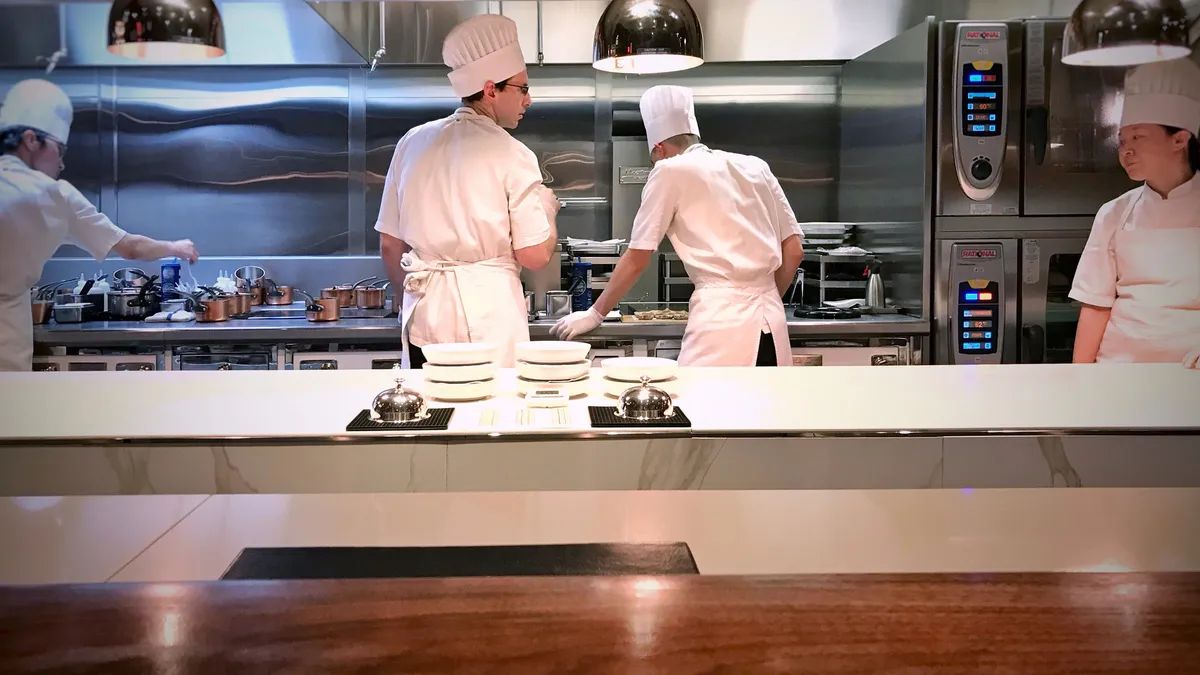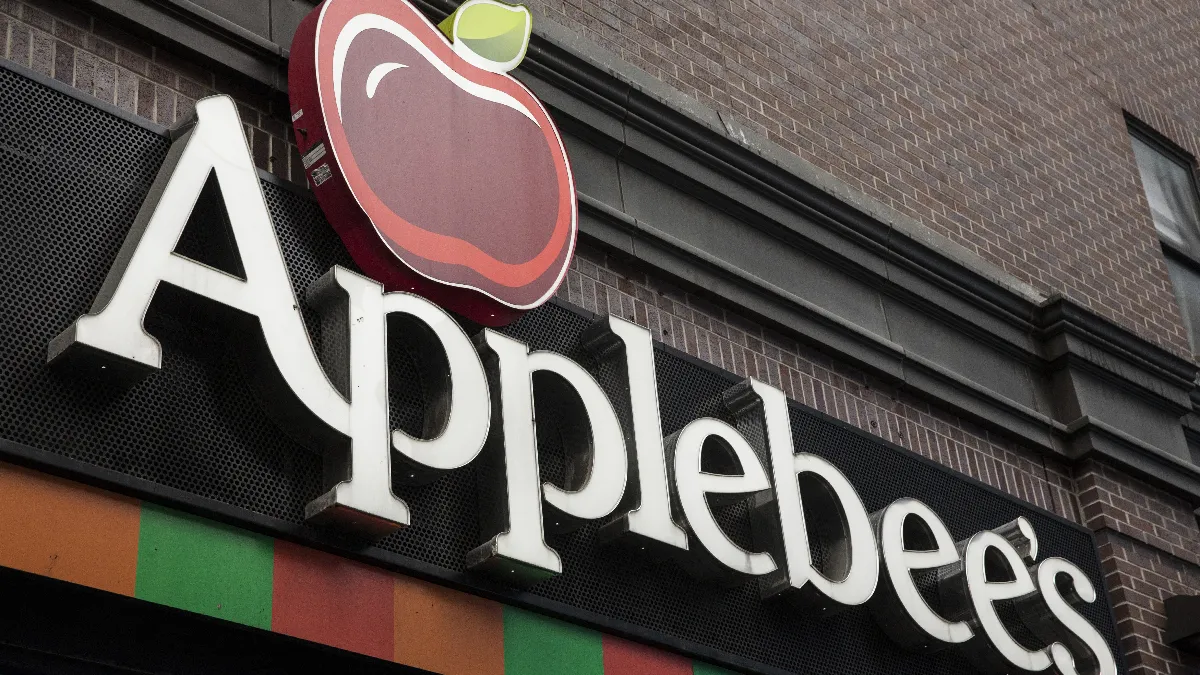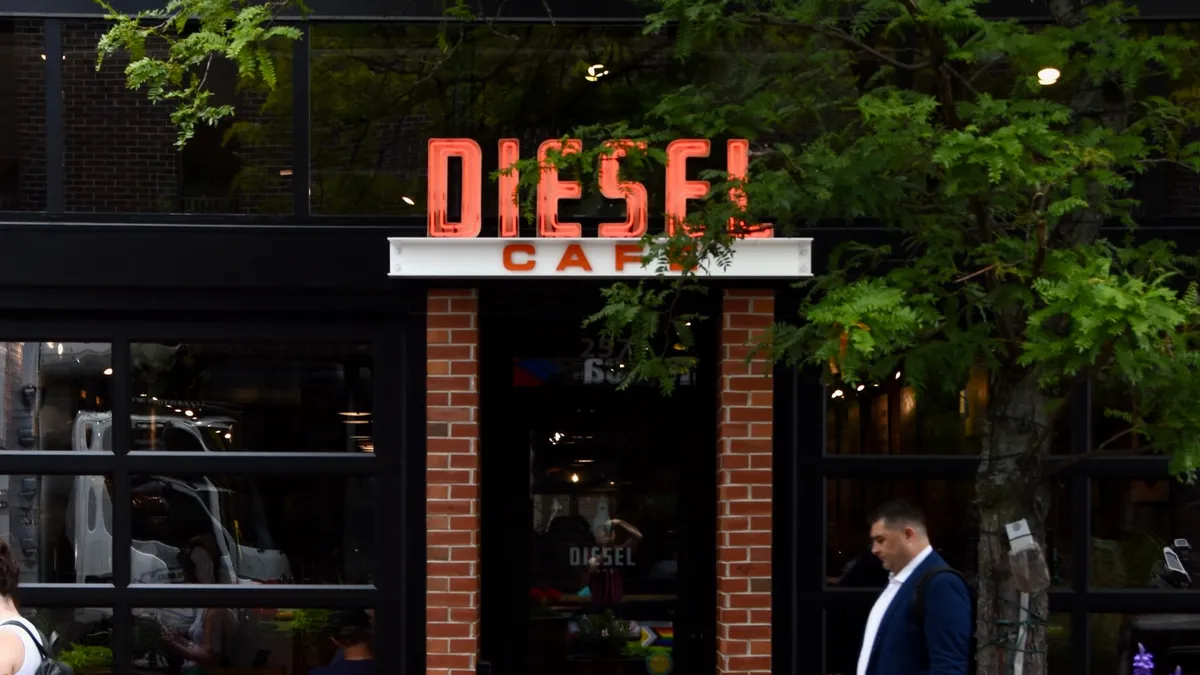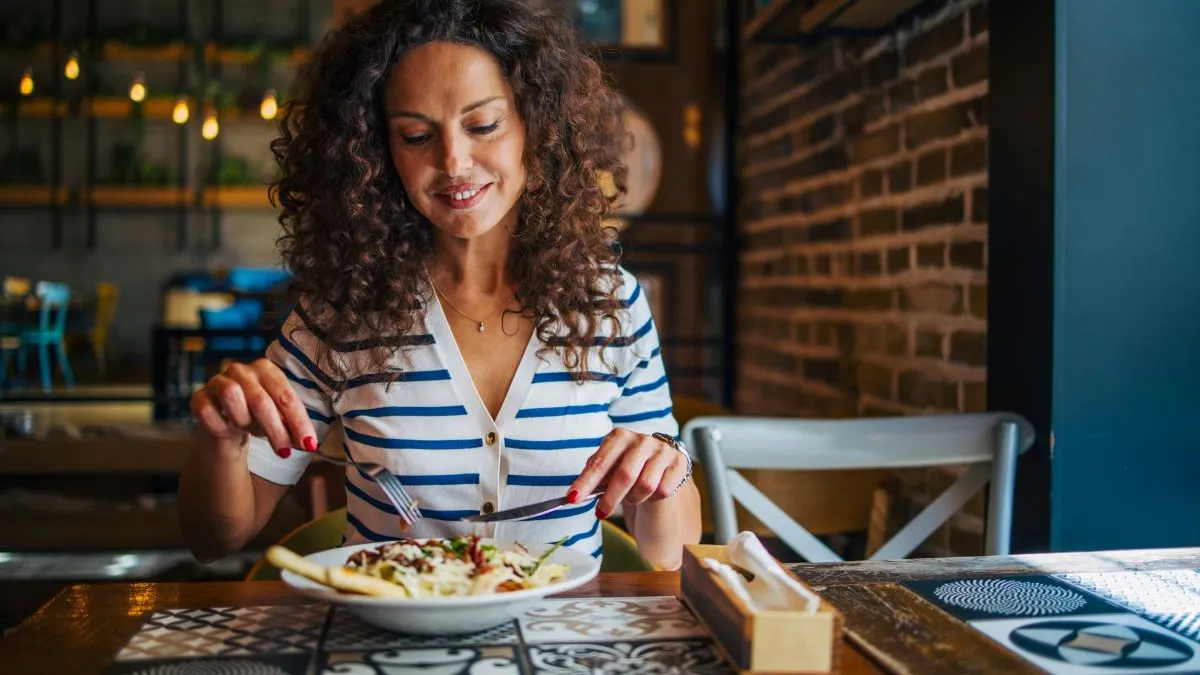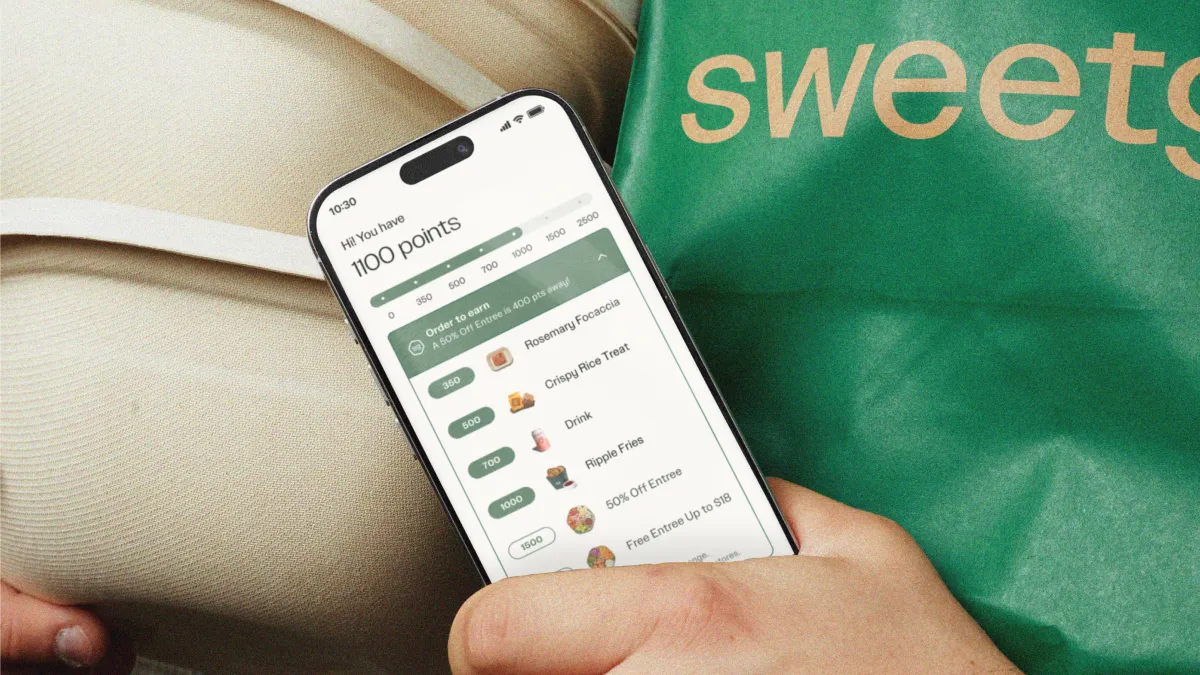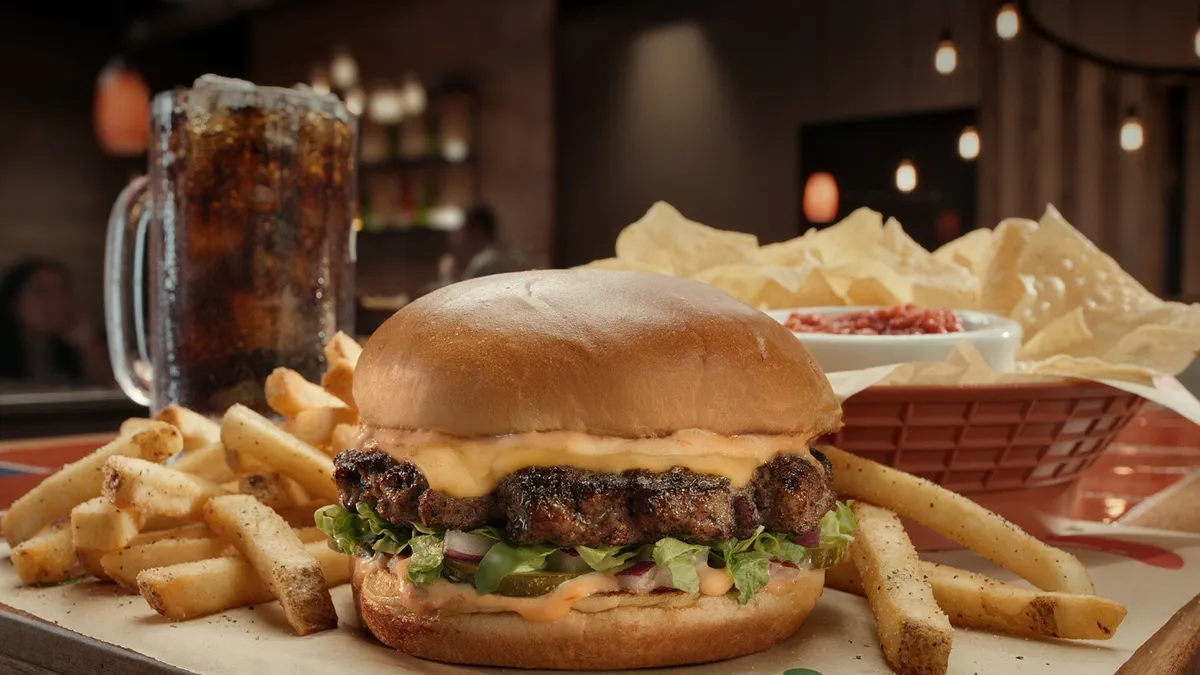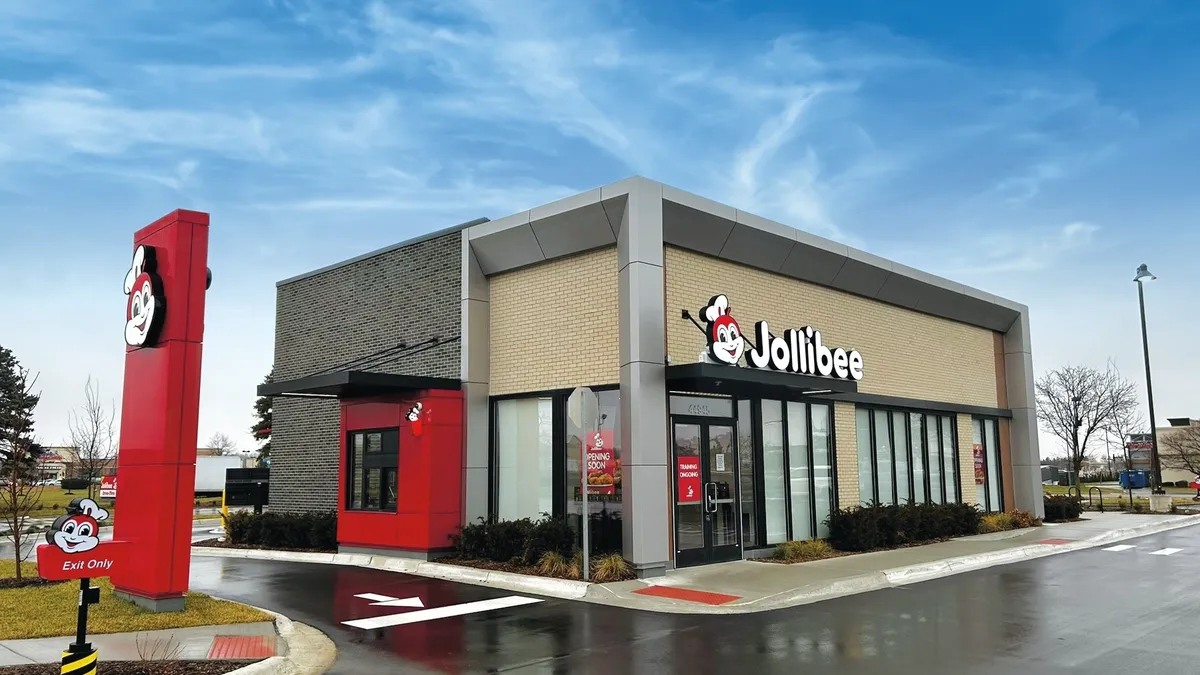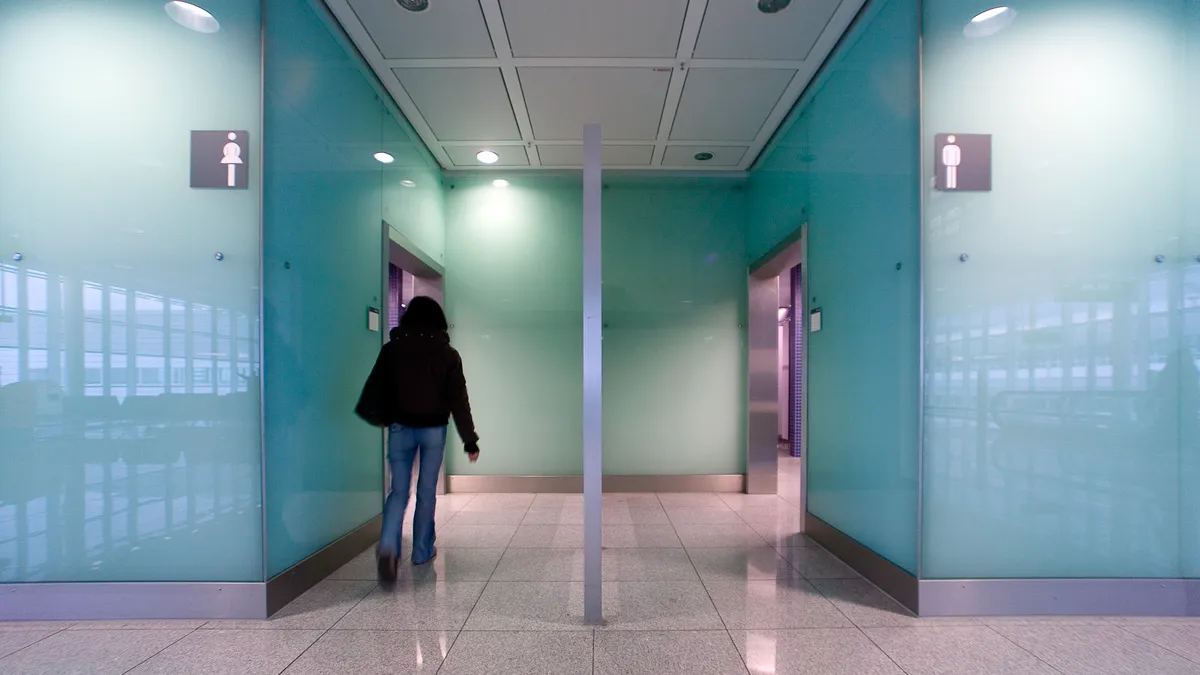This article is the first in a six-part series exploring the growth of the ghost kitchen market. Next week, Restaurant Dive will look at how to make these concepts profitable. Future articles will be posted here.
The pandemic is gutting the restaurant industry’s traditional dine-in business, but the crisis has also presented an opportunity for digital income channels to accelerate growth — especially for ghost kitchens.
The budding segment was on the rise prior to COVID-19's upheaval, buoyed by the steady gains made in the food delivery space. Between 2014 and 2019, global delivery sales more than doubled, according to Euromonitor. That growth has spiked this year, as government-mandated dining room restrictions and consumers' lingering fear of eating out has fueled a triple-digit increase in delivery spend year-over-year, Cardlytics research shows. Uber Eats' revenue is up more than 100% over last year, while Grubhub’s revenues are up by over 40%, for example. And the NPD Group found that while overall restaurant traffic dropped 22% in March, delivery orders increased almost 70%.
Consequently, ghost kitchens, or delivery-only restaurant facilities with no storefront or seating areas, are experiencing a parallel upswing. The segment’s allure isn't new. In 2015, Grubhub and Seamless were already operating about 10% of their New York City restaurants out of ghost kitchens, and digital-savvy restaurants have been turning to shared-use commercial kitchens for about a decade in a bid to reduce occupancy and overhead costs.
Now, there are estimates that the ghost kitchen segment could create a $1 trillion global opportunity by 2030, according to a recent report from Euromonitor.
Pandemic exacerbates consumer demand for convenience
Consumers are busier and more connected than ever before, according to Nielsen. That connectivity has driven double-digit growth of digital ordering habits throughout the past five years, crystallizing an on-demand economy.
"Younger consumers are especially conditioned to a level of technology-enabled convenience. They want what they want when they want it. This was already happening pre-COVID. All of a sudden we moved into a broader consumer set — a whole new section of consumers wants delivery. That has quickly become the expectation," said Geoff Madding, CEO of virtual kitchen marketplace Nextbite.
Delivery used to be a differentiator largely for just pizza and Chinese restaurants, but growing diner demand for speed and convenience throughout the past few years has necessitated the adoption of delivery throughout the industry.
"People love to sit at home and order food from their favorite restaurants. Brands are trying to figure out how to get their products to consumers faster," said Vlad Rikhter, CEO of automation platform Zenput. "Everyone wants to be Domino's."
Domino's has long been a delivery-first company, with a small unit footprint designed to fulfill a busy off-premise business. But that’s not the case for most restaurant concepts, especially independent operators scrambling to meet skyrocketing delivery demand. This is why ghost kitchens — once considered a niche channel — are now being hailed by some as a potential lifeline for restaurants.
"Brands are trying to figure out how to get their products to consumers faster. Everyone wants to be Domino's."

Vlad Rikhter
CEO, Zenput
"Some of ghost kitchens' benefits come from labor savings, but more of it is that brick-and-mortar restaurants have evolved to maximize dine-in floor space and minimize kitchen space in an effort to maximize profits. Most restaurants aren’t optimized for delivery," Alex Frederick, senior analyst at PitchBook, said. "As we look at increasing food delivery, these kitchens are one model helping restaurants adapt to that trend without changing their existing real estate, while other brands are opening a digital-first space focused on kitchens and food optimized for delivery."
Madding adds that up until a year or two ago, few people outside of coastal cities even knew what a ghost kitchen was. "No one was thinking about leveraging their existing kitchens. This has become a real estate play and can take down occupancy rates by 50%," he said.
Lower fixed costs are unquestionably a benefit, but savings from labor are also at play here. In fact, wage inflation increased by about 3% in 2019 alone — a big deal as labor costs can detract about 30% of a restaurant’s revenues.
"Labor savings are no doubt a big benefit driving the growth of this segment," Frederick said.
Just a few months ago, Peter Schatzberg, founder of Dubai-based, Delivery Hero-backed Sweetheart Kitchen, painted a clearer picture of these labor savings, telling Wamda.com that a typical restaurant processes 15 to 20 delivery orders per hour while a ghost kitchen can process 60 with just one employee.
Breaking down the types of 'ghost' concepts
As the ghost kitchen segment grows, so does the number of names for these concepts. Ghost kitchens, virtual kitchens, cloud kitchens and dark kitchens are a few of the most popular terms for delivery-only restaurant concepts, and Frederick notes that operators, investors and consumers alike often interchange them.
Rikhter agrees that there is a tendency for these concepts to blend together, but makes a distinction between ghost kitchens and virtual restaurants. Euromonitor describes virtual restaurants as prepared food brands that exist only online, with no physical locations.
"There are certain companies, especially in the casual dining segment, that are using their own kitchen to deliver out of with a delivery-only menu," Rikhter said.
Take Brinker International's It's Just Wings brand, which launched in June. This concept qualifies as a virtual restaurant because it has no brick-and-mortar presence on its own, but leverages another one of its larger brands' kitchen space, like Chili's. Brinker CEO Wyman Roberts expects It’s Just Wings to be worth $150 million within its first year.
"If you’re a bigger brand, you tend to want to have more control in what you’re going to do and do [a virtual brand] on your own," Rikhter adds.
"You can't just turn on delivery. If your food doesn’t deliver well, it'll hurt your brand. If consumers don’t think of you as a delivery brand, you have to spend money to get them to think that way."

Geoff Madding
CEO, Nextbite
Conversely, Nextbite’s portfolio is filled with proprietary virtual brands with no storefronts, including Mother Clucker, Firebelly Wings, Grilled Cheese Society and Outlaw Burger. Nextbite develops these data-driven, delivery-only concepts for restaurants to operate within their existing space and alongside their existing menus. All of this underscores the fluid nature of how brands are using the ghost kitchen space overall.
From Rikhter's perspective, existing brands leveraging their kitchen space to create delivery-only concepts hold the most potential right now, particularly in the fast casual space. Chipotle, for example, has a second makeline explicitly for delivery orders, which gives the company the ability to increase throughput as those orders ramp up, Rikhter said.
"It makes things a little easier to move faster. As the volume picks up, they may start thinking they need a full, separate ghost kitchen offsite, but not until they have the volume," he said.
Wingstop may already be at that point, since the chain has started dipping its toes into the ghost kitchen space. In June, the restaurant opened its first ghost kitchen in the U.S. The Dallas location is under 400 square feet — less than a quarter of the size of a typical Wingstop unit — and only facilitates delivery orders.
Madding believes virtual kitchens have the most potential, but adds that this depends on what problem the operator is trying to solve.
"You can't just turn on delivery. If your food doesn’t deliver well, it'll hurt your brand. If consumers don’t think of you as a delivery brand, you have to spend money to get them to think that way," he said. "We bring in food that does delivery well, and get your virtual delivery brand out there, and we do it out of your existing operation so it doesn’t change what you’re already doing. This way, if there’s less people coming into your door, you can continue to serve them going out the other door."
U.S. market is slowly shrinking the gap with Asia
Any predictions about potential in this space should materialize sooner rather than later, as the COVID-19 pandemic has pushed the growth of ghost and virtual kitchens into a new gear.
A number of high-profile brands, from Wingstop to Brinker International to Cracker Barrel, are experimenting with the model, while the space overall has attracted a significant amount of interest from investors. Still, the U.S. market has a way to go to catch up to other markets.
The U.S. currently has 1,500 ghost kitchens, putting it ahead of the U.K. market (750), but behind China (7,500+) and India (3,500+), according to Euromonitor estimates from July. For broader context, the Chinese online food ordering and delivery market was already at $62 billion in 2018 and is expected to reach $130 billion by 2021, according to Rikhter’s Zenput data, while the entire U.S. restaurant industry is about $800 billion.

Emma Liem Beckett/Restaurant Dive, July 2020 data from Euromonitor
"The Chinese are growing [this space] rapidly. They have a handful of companies that are building kitchen versions of WeWork," Rikhter said, adding that the U.S. market is still in its early phases.
Still, the COVID-19 pandemic has accelerated the space by about five years, according to Madding.
"We’re behind Asia and a lot of parts of Europe, but we’re now less behind than we were. When we were talking about this nine months ago, I didn’t even know how to bring it up or explain it," he said. "Because of COVID, we’ve moved five years in three months. We’re running to catch up now."
That’s not only because delivery and off-premise became a survival tactic but also because restaurant operators no longer have the luxury of shying away from innovations or new access points.
"The pushback we got before the pandemic was because operators were worried about disruptions. These are restaurants operating on wafer-thin margins and even though customers were starting to move off-premise before this pandemic, restaurants didn’t want to disrupt their business," Madding said. "The pandemic threw that mindset out the window."
Second Measure data released on Sept. 15 indicates that shelter-in-place orders have likely been driving more Americans to make their first meal delivery purchase. In August, sales for meal delivery services grew 158% year-over-year.
"I think the best way to put this is that my 75-year-old mother uses DoorDash. That wasn’t going to happen probably ever. But once the pandemic happened and she got her credit card in there and ordered once, she realized how easy it was and she became a customer,” Madding said. "That’s not going away. The delivery market just expanded overnight what would typically take five or so years. These ghost or virtual kitchen spaces are needed to support that growth."
Ghost kitchens in a post-COVID world
What does this acceleration mean for the ghost and virtual space in a post-COVID world? Plenty of analysts predict delivery to be a sticky consumer behavior, which means the ghost kitchen space should have a long runway for growth.
"It’s difficult to say what’s going to happen, but I think more mom and pops will be forced to adopt food delivery, while larger brands will adopt ghost kitchens in some form," Frederick said. "I do think ghost kitchens will look different than they do now. I expect large brands will build their own facilities in urban areas and will use third-party facilities in more dispersed areas."
Madding also anticipates expansion beyond densely populated, urban areas and into suburban markets, particularly as the adoption rate for delivery expands into those regions. Indeed, urban markets were hit hard by the pandemic, which has spurred a bit of an exodus to the suburbs.
"I do think ghost kitchens will look different than they do now. I expect large brands will build their own facilities in urban areas and will use third-party facilities in more dispersed areas."

Alex Frederick
Senior analyst, PitchBook
"If I'm in New York, there are a billion choices for takeout. If I’m in suburban Denver, that’s not the case. But now, there’s this thing customers want and they want it where they live. The expectation is there now," he said. "But there’s a lack of infrastructure to support this demand. This model will really help that."
Rikhter believes delivery demand will force brands to move toward a bifurcated product offering depending on what type of channel they’re in — on-premise or off-premise. The restaurant industry is already seeing glimpses of this, as Chipotle and Sweetgreen both experiment with digital-only offerings autonomous from their traditional menus.
"The segmentation of the offerings is going to be interesting. You can have a singular brand with a delivery-only menu, a fast casual-only menu and a full, sit-down casual dining menu," he said. "The concept of one of these brands offering different products in different ways is exciting. I think we [will] see how it plays out. Will consumers adapt to it well and will the delivery business become 15 to 20% of a brand’s revenue?"


